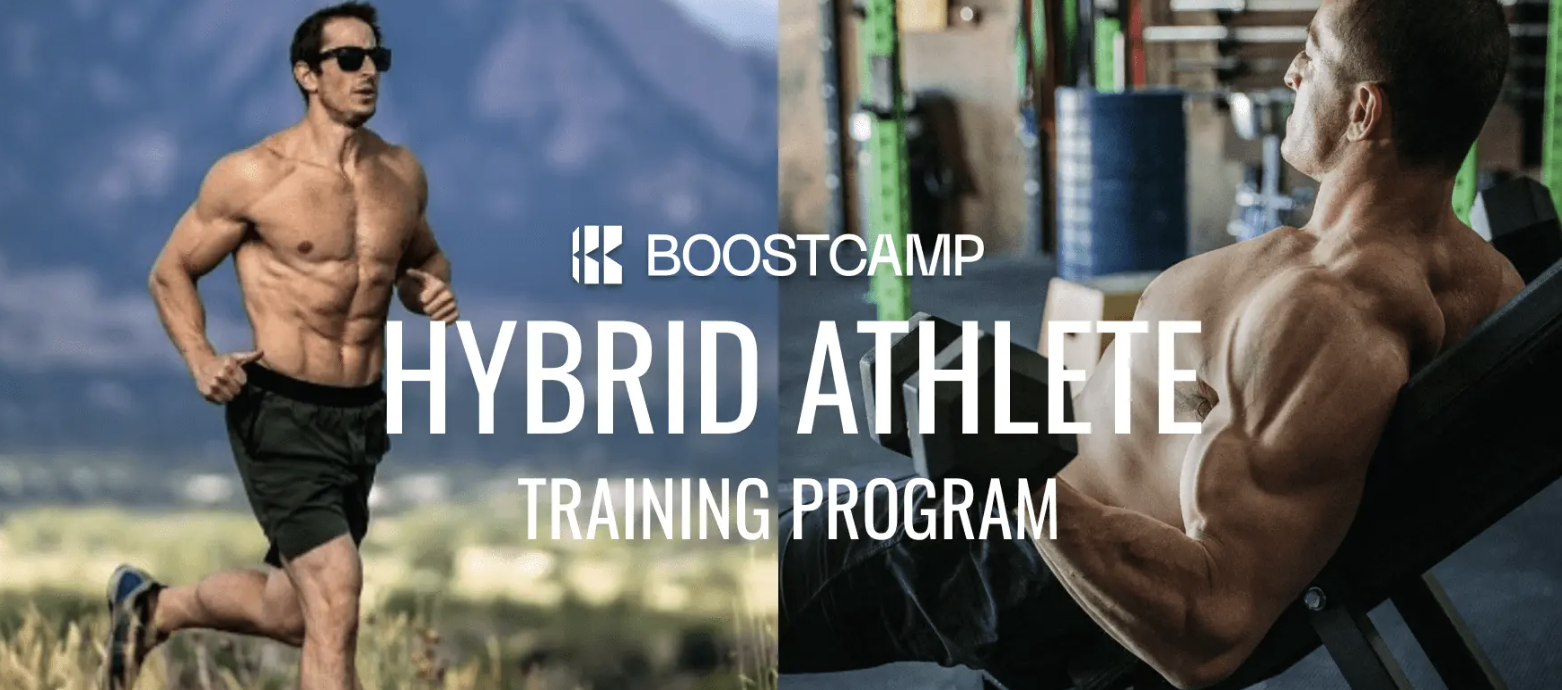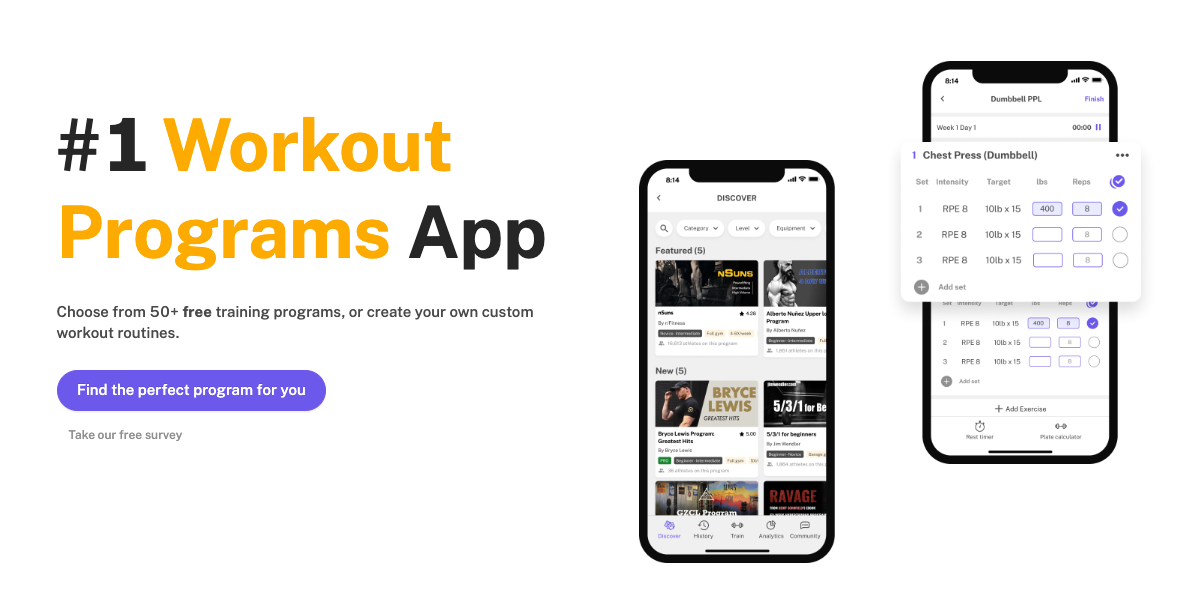What it Means to be a Hybrid Athlete
Written by the Boostcamp staff
Training for multiple sports
In today's fitness world, athletes are constantly seeking new ways to push the boundaries of what their bodies can achieve. Traditional training often focuses on one specific goal, such as strength, endurance, or hypertrophy. But what if you could excel in multiple domains—building impressive strength while also improving cardiovascular fitness? This is the essence of becoming a hybrid athlete.
A hybrid athlete is someone who strives to master both strength and endurance, two attributes that are often viewed as opposing goals. They don't just want to be strong or fast—they want to be both. It’s about blending two seemingly opposite training philosophies and excelling in each. Picture an athlete who can squat heavy weights while also being capable of running a marathon, or someone who can deadlift impressive loads while maintaining agility and explosive power in endurance sports. This level of versatility requires a unique approach to training that combines resistance exercises with cardiovascular conditioning, leading to a well-rounded, highly capable body.
The Rise of the Hybrid Athlete
Historically, strength athletes and endurance athletes followed very different training paths. Strength athletes, like powerlifters, bodybuilders, and Olympic weightlifters, focused primarily on lifting heavy weights, maximizing muscle mass, and improving raw strength. Their workouts revolved around high-intensity lifts with low repetitions. On the other hand, endurance athletes—runners, cyclists, and swimmers—prioritized cardiovascular training, aiming to improve their aerobic efficiency and stamina through long-distance, sustained efforts.
However, as fitness evolved and athletes sought more functional and adaptable forms of fitness, the benefits of combining these two methods became clear. Hybrid training not only creates a more well-rounded athlete but also offers significant carryover into real-life situations. The average person needs both strength and endurance in daily tasks, whether it's carrying groceries, running to catch a bus, or participating in recreational sports. As a result, the hybrid athlete has emerged as the symbol of peak physical capability in an increasingly functional fitness landscape.
Benefits of Hybrid Training
The hybrid training approach offers a wide range of benefits, making it an attractive option for many athletes and fitness enthusiasts. Let’s explore some of the key advantages:
Balanced Athleticism: Hybrid athletes are not confined to a single style of fitness. They can excel in a variety of activities, ranging from strength sports like powerlifting to endurance sports like running, swimming, or cycling. This makes them more versatile and better equipped to handle a diverse range of physical challenges.
Injury Prevention: Specializing in only one type of training can often lead to imbalances, which may increase the risk of injury. Hybrid training helps to create a balanced body by combining strength and cardio, enhancing mobility, stability, and overall physical resilience. Strength work builds the muscles and joints' integrity, while cardiovascular exercise improves circulation and aids in recovery.
Mental Toughness: Hybrid training is challenging because it requires athletes to push the boundaries of both heavy lifting and endurance workouts. Balancing the two demands can foster mental grit and adaptability, building not just physical strength but also psychological resilience. This mental toughness translates into better performance in competition or high-pressure environments.
Improved Recovery: Incorporating cardio into a strength-based program helps to improve recovery between strength sessions by increasing blood flow and oxygen delivery to muscles. This accelerates the body’s ability to repair and regenerate after intense lifting sessions, making hybrid athletes better equipped to recover and train hard on a consistent basis.
Longevity: Hybrid training encourages longevity in fitness. Athletes who focus solely on one form of training—whether it's endurance or strength—may find that over time, their bodies wear down due to repetitive strain. Hybrid training helps avoid the pitfalls of overuse by providing a balanced approach to fitness, leading to a healthier body for years to come.
The Hybrid Athlete Program

For those aspiring to reach peak athleticism, the Boostcamp Hybrid Athlete Program, created by elite hybrid athlete Bryan Boorstein, offers a meticulously designed approach to achieving a balance between strength and endurance. This 11-week program is structured to help participants build muscle, strength, and cardiovascular endurance, making it ideal for lifters who want more than just size and power—they want all-around athleticism.
Program Overview
The Boostcamp Hybrid Athlete Program follows an 11-week progression that includes two 5-week build phases separated by a deload week for recovery and resetting. This structure ensures continuous progress while allowing the body to recover from the rigors of intensive training.
Strength Training: The program emphasizes three days of lifting per week, focusing on the torso (chest, back, shoulders), lower body, and arms. Each lifting session is carefully balanced, allowing you to target multiple muscle groups for overall strength and muscle development.
Day 1: Torso (chest, back, shoulders)
Day 2: Lower body + arms
Day 3: Torso (chest, back, shoulders)
Cardio Training: Cardio is incorporated four times per week, with a mix of low-intensity endurance (Zone 2 cardio), high-intensity threshold intervals, and VO2 max intervals. This ensures that you are developing both aerobic and anaerobic capacities, key to hybrid fitness.
Zone 2 cardio (twice per week): Low-intensity endurance designed to build a strong aerobic base, perfect for enhancing your ability to recover and perform for extended periods.
Threshold intervals: High-intensity cardio designed to challenge your cardiovascular system and force it to adapt to more strenuous demands.
VO2 max intervals: Short bursts of high-intensity effort aimed at boosting your maximal oxygen uptake, essential for peak performance in endurance and high-intensity workouts.
Additionally, there’s an optional abs/core session included in one of the Zone 2 cardio days to further strengthen your core muscles, which are essential for both lifting heavy weights and maintaining endurance.
Sample Weekly Structure
Here’s what a typical week in the Boostcamp Hybrid Athlete Program looks like:
Monday: Torso (chest/back/shoulders) + VO2 max training
Tuesday: Zone 2 cardio (low-intensity endurance)
Wednesday: Lower body + arms
Thursday: Zone 2 cardio + optional abs/core session
Friday: Torso (chest/back/shoulders)
Saturday: Threshold intervals (high-intensity cardio)
Sunday: Rest or mobility
What You Can Expect
Exercise Progressions: Each session includes detailed progression notes to ensure that you are consistently improving. Whether it’s adding weight, increasing reps, or enhancing cardio performance, the program is built to help you continuously challenge yourself and avoid plateaus.
Video Demos: For every exercise, you’ll have access to video demonstrations to ensure proper form and technique, reducing the risk of injury and maximizing your gains.
Repeatability: Once you complete the 11-week cycle, you can repeat the program indefinitely to keep progressing and improving your muscle mass, strength, and endurance. The design is flexible, allowing you to continue making gains even after several cycles.
Warm-Up Guidelines
50% of working weight for 6-10 reps
75% of working weight for 3-5 reps
For lower body exercises, an additional warm-up set at 85-90% for 1-2 reps may be required.
Single-joint exercises may only need one warm-up set at 60-75% of working weight.
Conclusion
The Boostcamp Hybrid Athlete Program is an excellent choice for athletes looking to break the boundaries of traditional training. By combining weightlifting with cardiovascular training, you can develop a powerful, resilient, and adaptable body capable of excelling in multiple domains of fitness. Whether you're an experienced lifter or someone seeking to elevate your training, this program offers a balanced, science-backed approach to help you reach your goals.
Take the leap and become a stronger, more resilient version of yourself by signing up for the Boostcamp Hybrid Athlete Program today!
Boostcamp has plenty of free programs that help with being a hybrid athlete, be sure to check them out and follow Boostcamp on Instagram and subscribe on YouTube!


